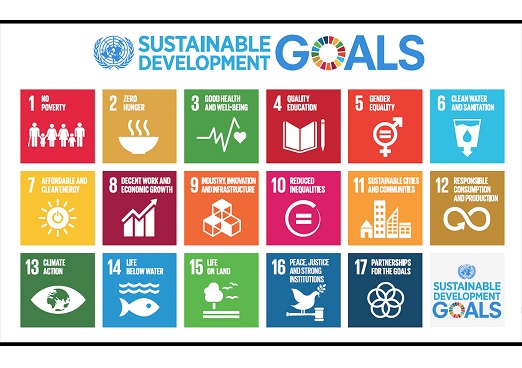Tuesday 28 May 2019
Infrastructure and sustainability
Ultimately the multiple environmental and social challenges – not only climate change but dangerous air pollution, ocean acidification, providing modern energy to those without it, and feeding a growing population just to name a few – which are addressed by the Sustainable Development Goals – all come down to our choice of infrastructure and its design. In this context infrastructure is not exactly the same meaning as the traditional definition of infrastructure used by investors but there is close overlap.
Our existing infrastructure in the domains of energy, the built environment, transport, and agriculture, was designed and built in a different age with different levels of technical know-how, a very low knowledge of and consideration of human impacts on the environment, and a very different set of social and economic parameters. Existing infrastructure, for example large centralised fossil fuel burning power plants, our electricity distribution system and our built environment, were designed the way they were designed with the level of available technology, in the economic circumstances and the regulatory and institutional set-up of the time.
Much (most) of it is no longer appropriate for today’s world and the need, and desire, is to address the Sustainable Development Goals. We now have much expanded technical capabilities, expanded knowledge and consideration of environmental and social impacts of our choices around infrastructure, and different economic and social drivers. Information technology and the availability of data are breaking down barriers between infrastructure silos – for example everyday buildings can be power stations and cars can become electricity storage devices.
Given the long life of infrastructure investments we need to be making different choices that result in smarter, more resilient, greener, higher performing infrastructure. We also need to ensure that current infrastructure projects do not lock in poor environmental performance, doing so risks making environmental problems worse and assets becoming stranded. The combination of technology and infrastructure – “Infratech” – gives us enhanced ability to make different choices.
Infratech
Infratech has been described as “the deployment or integration of digital technologies with physical infrastructure to deliver efficient, connected, resilient and agile assets. This combination of physical and digital infrastructure designs and produces assets that respond intelligently, or inform and direct their own maintenance, use and delivery. These assets may also be automated and responsive to real-time or historical data. This produces benefits not only for the developer/operator, but also to the end-user in terms of efficiency, productivity and a better overall experience.” Investors are now more interested in the characteristics of infrastructure investments rather than the old definitions. The characteristics of high performance infrastructure are that it is effective in its main mission, smart, green, resilient and produces other social benefits.
Infratech covers all infrastructure domains including:
- Energy generation and distribution
- Built environment
- Transport
- Water and waste
- Food production
- Resource extraction, processing and use
- Communications
- Health and well-being
- Life safety systems.
and can include many types of technology including amongst others:
- digital monitoring and control systems
- e-commerce systems
- smart materials.
Combining technology and infrastructure can produce higher performance assets that are more effective, more efficient, smarter, greener and more resilient. Infratech can increasingly integrate these domains through the availability of data and control, changing economics and new business models.
To achieve the ambitious but essential SDGs we need to use Infratech to improve the quality of infrastructure investments, so that they contribute directly to the SDGs, and increase the rate of investment in smarter, greener, more resilient infrastructure.
We like working with companies doing just that and welcome conversations about how to maximize the growth of Infratech across all domains, not just energy, through informing, innovating, incubating or investing.

Comments
Comments are closed.
Dr Steven Fawkes
Welcome to my blog on energy efficiency and energy efficiency financing. The first question people ask is why my blog is called 'only eleven percent' - the answer is here. I look forward to engaging with you!
Tag cloud
Black & Veatch Building technologies Caludie Haignere China Climate co-benefits David Cameron E.On EDF EDF Pulse awards Emissions Energy Energy Bill Energy Efficiency Energy Efficiency Mission energy security Environment Europe FERC Finance Fusion Government Henri Proglio innovation Innovation Gateway investment in energy Investor Confidence Project Investors Jevons paradox M&V Management net zero new technology NorthWestern Energy Stakeholders Nuclear Prime Minister RBS renewables Research survey Technology uk energy policy US USA Wind farmsMy latest entries
- Ethical AI: or ‘Open the Pod Bay Doors HAL’
- ‘This is not the end. It is not even the beginning of the end. But it is, perhaps, the end of the beginning’
- You ain’t seen nothing yet
- Are energy engineers fighting the last war?
- Book review: ‘Stellar’ by James Arbib and Tony Seba
- Oh no – not the barriers again
- Don’t assume ignorance, sloth, bias or stupidity


